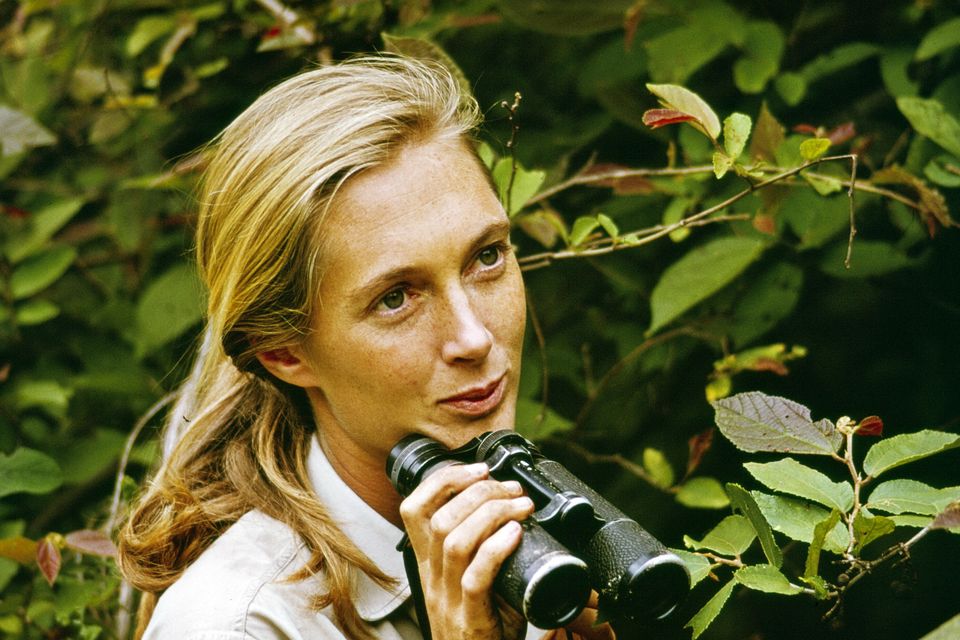World
Renowned Primatologist Jane Goodall Passes Away at 91

Jane Goodall, the esteemed primatologist who revolutionized the understanding of chimpanzees, has died at the age of 91. Her groundbreaking research and insights into the behavior of these great apes have significantly shaped scientific knowledge and public perception of animal intelligence and social structures. Goodall’s work was celebrated as “one of the Western world’s great scientific achievements,” according to writer and biologist Stephen Jay Gould.
A Lifelong Passion for Animals
Born Valerie Jane Goodall in London on April 3, 1934, she was introduced to her lifelong fascination with wildlife at an early age. A gift from her mother, a toy chimpanzee named Jubilee, sparked her desire to explore the animal kingdom. Goodall’s childhood was spent outdoors, often playfully engaging with nature, as evidenced by her unusual habit of keeping earthworms under her pillow.
After completing her studies, Goodall took a position as a secretary at Oxford University and briefly worked in a film studio. Her path took a pivotal turn when a school friend invited her to Kenya, leading her to meet renowned paleontologist Louis Leakey. Leakey, who believed that studying great apes could reveal important insights about early human behavior, offered Goodall a job as his assistant.
Groundbreaking Research at Gombe
In July 1960, Goodall began her long-term study of chimpanzees at what is now known as Gombe National Park. Facing skepticism regarding her ability to observe these animals closely, she initially struggled as the chimpanzees fled from her presence. However, persistence paid off; after two months, she found a vantage point that allowed her to observe them without disturbing their natural behavior.
Goodall’s findings challenged prevailing notions of chimpanzee behavior, which was often viewed as aggressive. Her first major breakthrough occurred when she observed chimpanzees engaging in social behaviors such as hugging and hand-holding. This transformative understanding was further solidified when she documented that these animals were not only herbivorous but also engaged in hunting, showcasing their complex social structures.
The scientific community took particular notice when Goodall witnessed a chimpanzee named David Greybeard using a twig as a tool to fish for termites. This observation contradicted the established belief that tool-making was a defining characteristic of humanity, broadening the scope of what it means to be intelligent.
As her studies progressed, the dynamics of her relationship with the chimpanzees deepened. In her book, The Chimpanzees of Gombe (1986), Goodall described moments of tension and connection, illustrating her evolving role as both an observer and a participant in their lives.
In 1964, her modest research camp evolved into the Gombe Stream Research Centre, attracting students and researchers from around the world. Despite facing criticism for her unconventional methods—such as naming the chimpanzees instead of assigning them numbers—Goodall persisted, ultimately earning her PhD from Cambridge University in 1965 without a prior BA, a rare achievement.
A Legacy of Conservation and Advocacy
Goodall’s contributions extended beyond academia; she became a global advocate for animal welfare and environmental conservation. Her marriage to Dutch photographer Hugo Van Lawick in 1964 produced a son, but the couple divorced in 1974. Goodall later married Derek Bryceson, whose death in 1980 was a significant personal loss.
Throughout her career, Goodall’s work has inspired countless individuals and has led to increased awareness of the importance of preserving natural habitats. Her legacy is not only rooted in her scientific discoveries but also in her profound impact on the fields of conservation and animal rights.
Jane Goodall’s dedication to understanding and protecting chimpanzees has left an indelible mark on both science and society, reminding us of the intricate connections shared among all living beings. Her passing marks the end of an era, but her influence will continue to resonate through ongoing conservation efforts and scientific inquiry.
-

 Top Stories3 months ago
Top Stories3 months agoTributes Surge for 9-Year-Old Leon Briody After Cancer Battle
-

 Entertainment4 months ago
Entertainment4 months agoAimee Osbourne Joins Family for Emotional Tribute to Ozzy
-

 Politics4 months ago
Politics4 months agoDanny Healy-Rae Considers Complaint After Altercation with Garda
-

 Top Stories4 months ago
Top Stories4 months agoIreland Enjoys Summer Heat as Hurricane Erin Approaches Atlantic
-

 World5 months ago
World5 months agoHawaii Commemorates 80 Years Since Hiroshima Bombing with Ceremony
-

 Top Stories3 months ago
Top Stories3 months agoNewcastle West Woman Patricia Foley Found Safe After Urgent Search
-

 Top Stories5 months ago
Top Stories5 months agoFianna Fáil TDs Urgently Consider Maire Geoghegan-Quinn for Presidency
-

 World5 months ago
World5 months agoCouple Convicted of Murdering Two-Year-Old Grandson in Wales
-

 World5 months ago
World5 months agoGaza Aid Distribution Tragedy: 20 Killed Amid Ongoing Violence
-

 World5 months ago
World5 months agoAristocrat Constance Marten and Partner Convicted of Infant Murder
-

 Top Stories4 months ago
Top Stories4 months agoClimbing Errigal: A Must-Do Summer Adventure in Donegal
-

 Top Stories4 months ago
Top Stories4 months agoHike Donegal’s Errigal Mountain NOW for Unforgettable Summer Views









